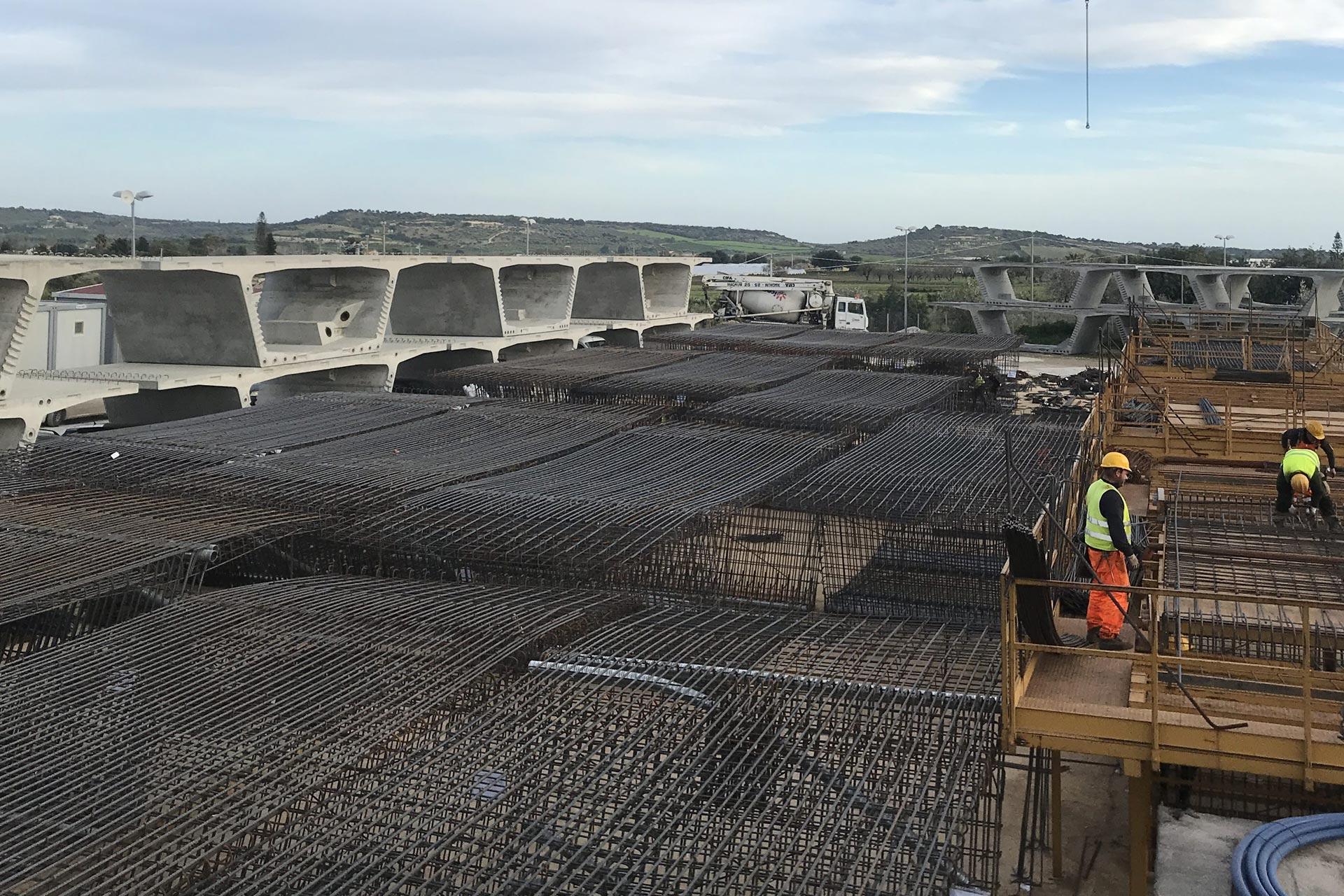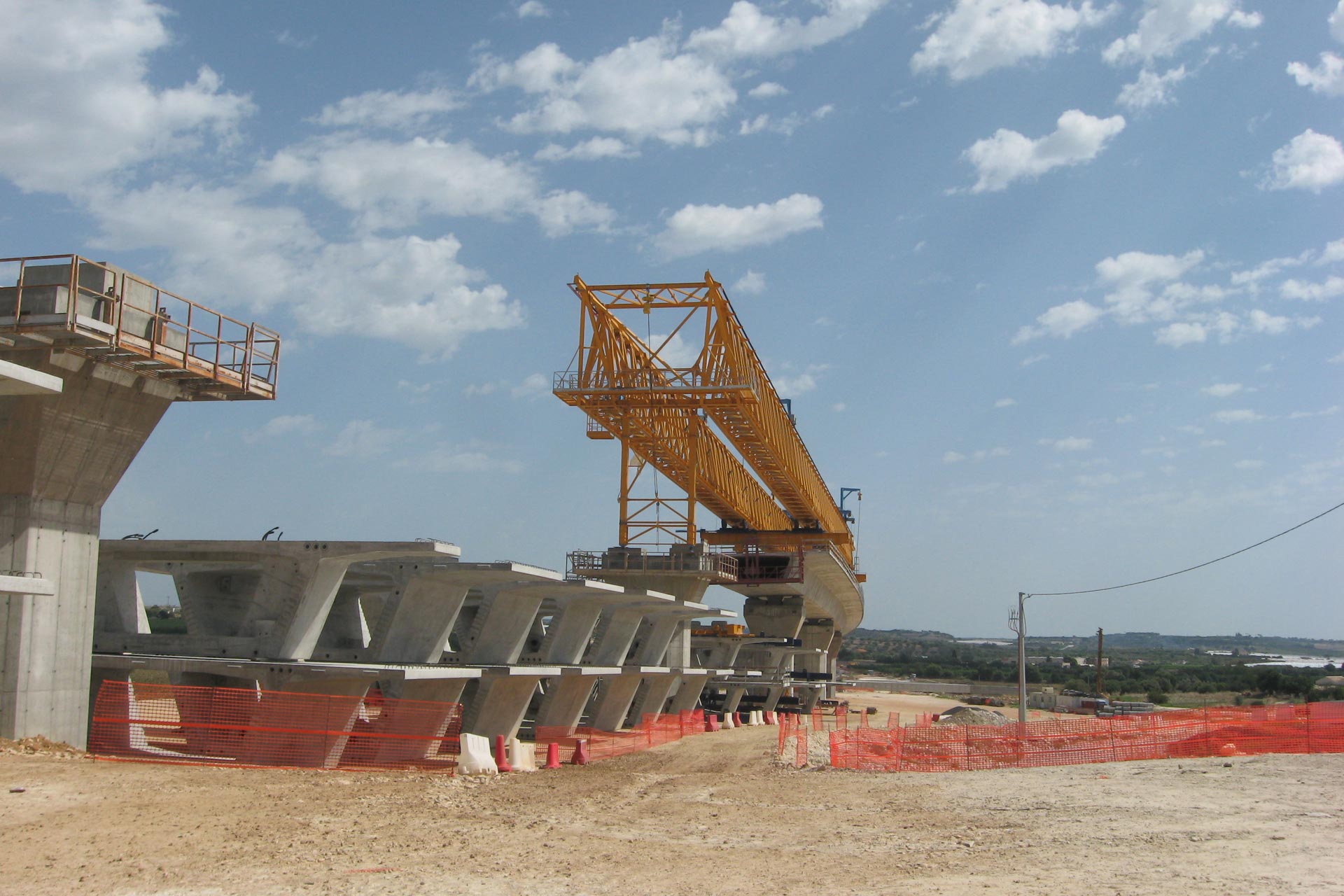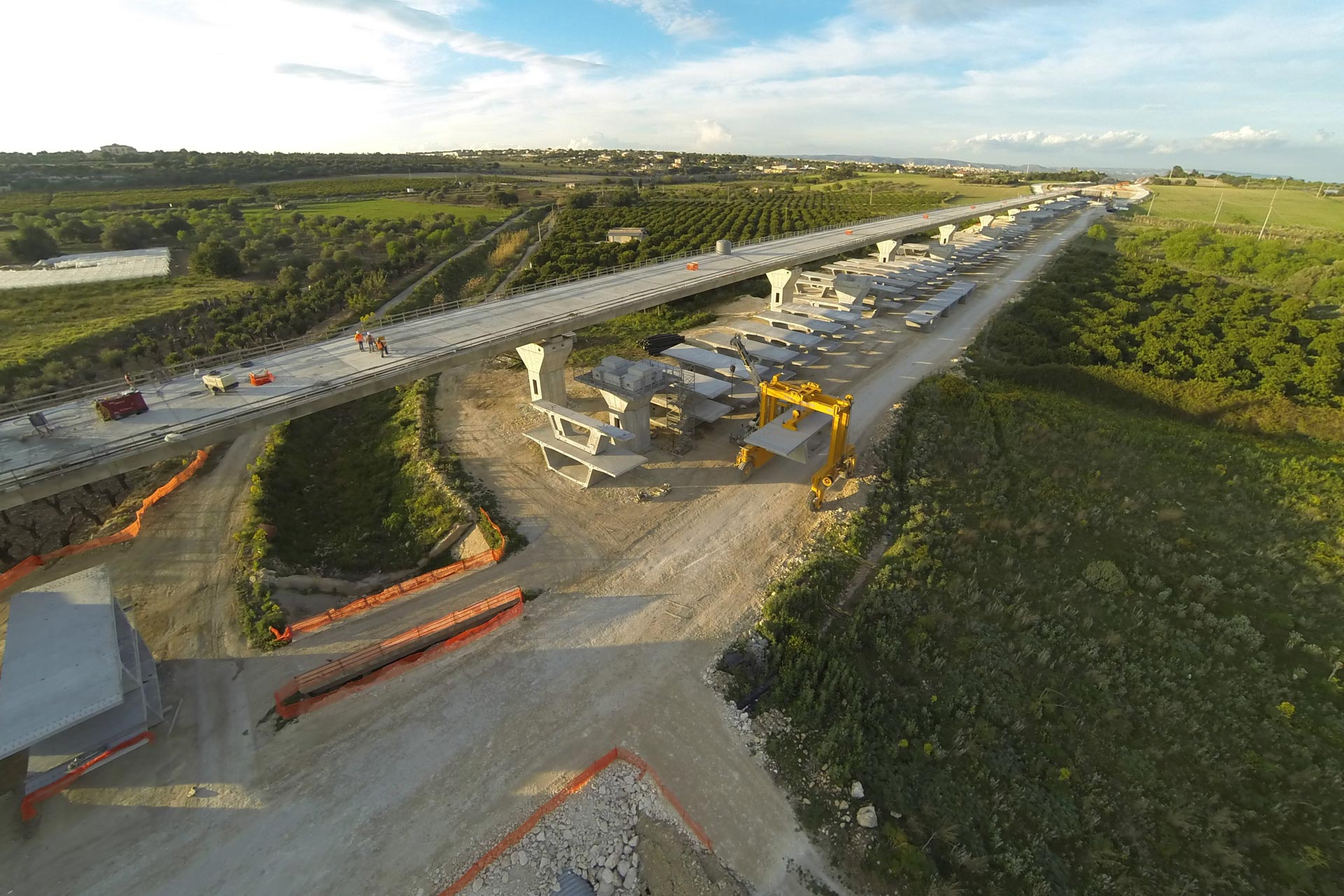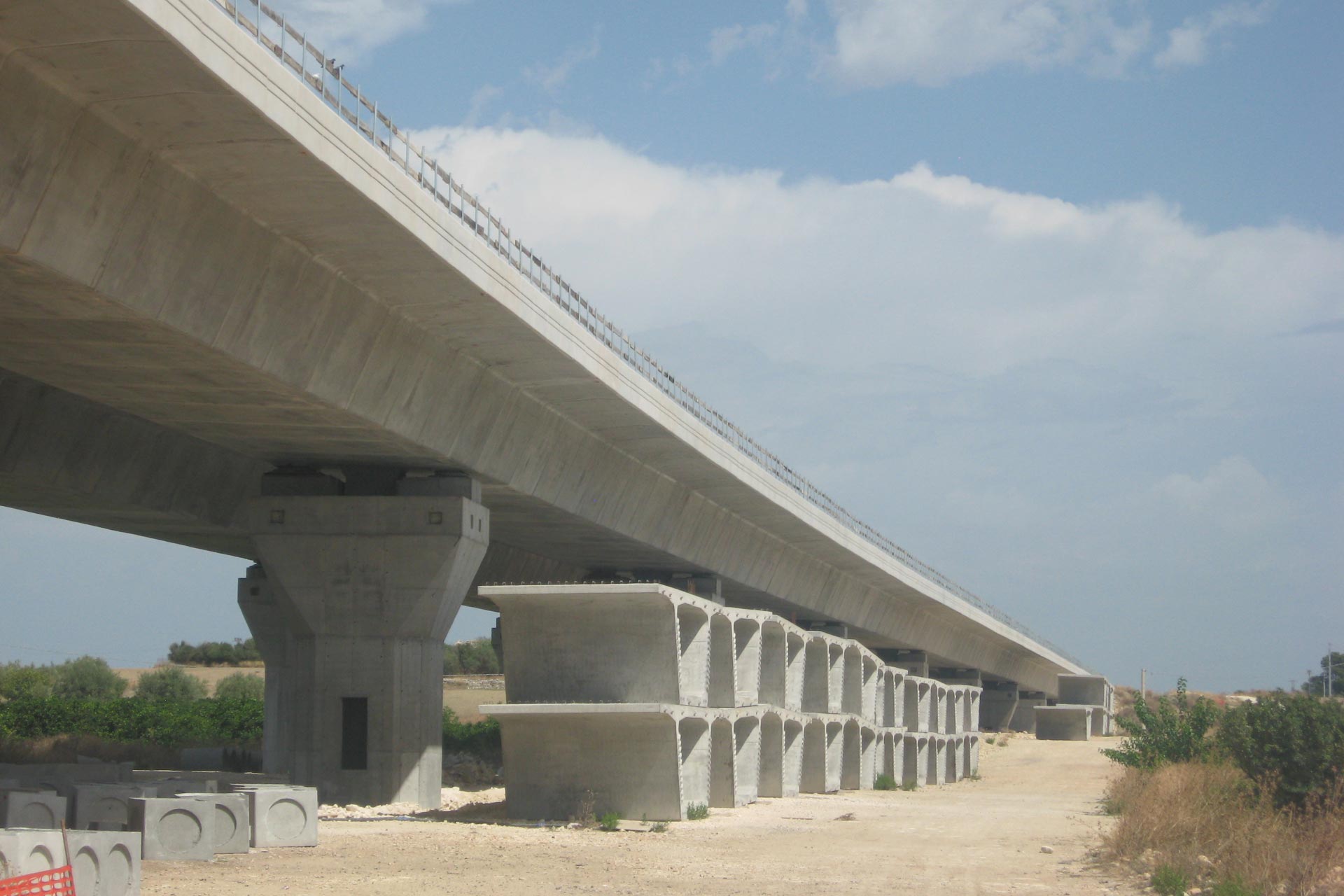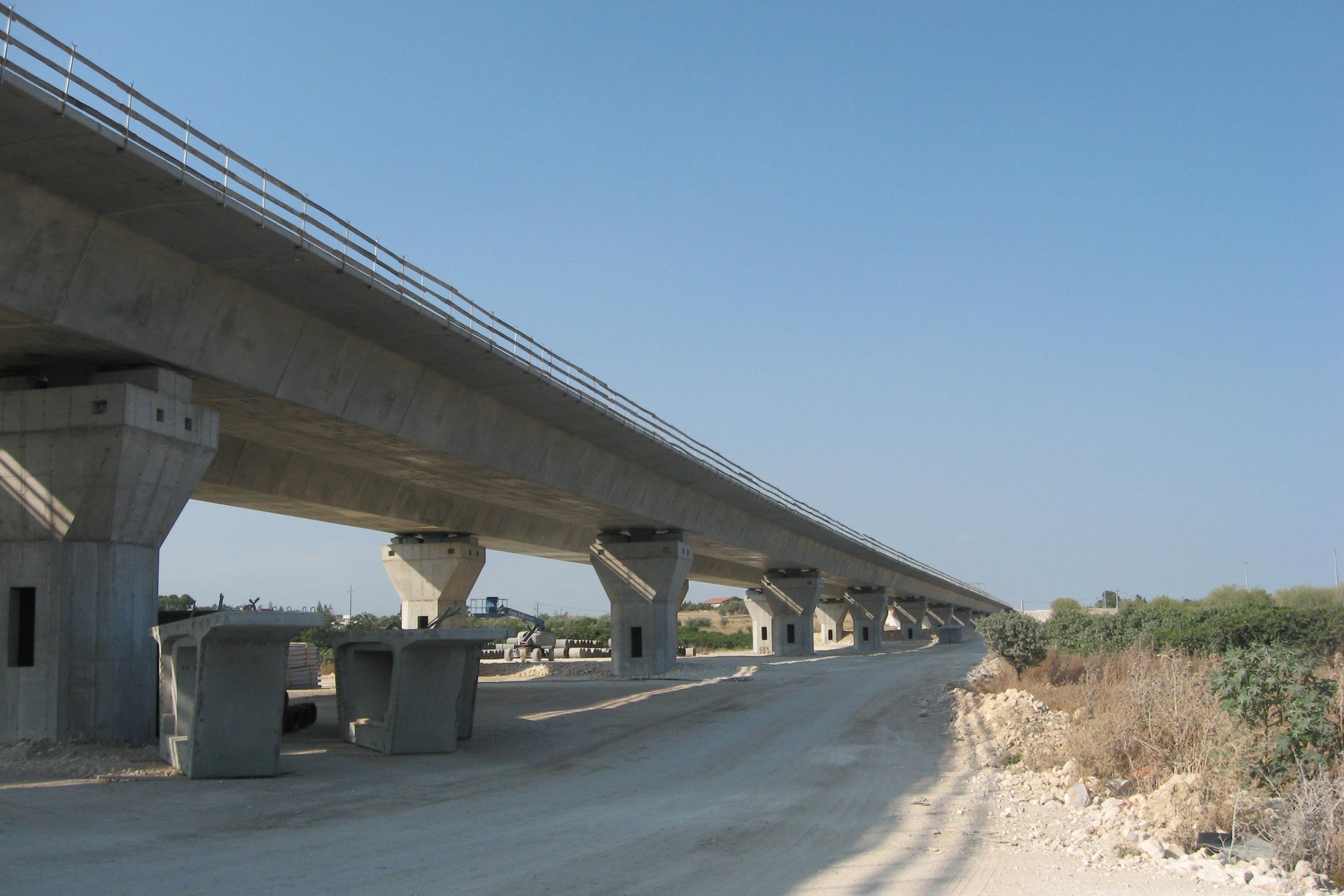Viaducts Salvia Scardina – Syracuse – Gela motorway; Sicily
Italy, Sicily
2015-2021
Motorway Viaduct
Span by span assembly and vacuum injections: construction speed and durability of the work
Siracusa - Gela motorway; Ispica and Modica section
Viaducts Scardina and Salvia
The viaducts have a distance between the piers ranging from 47 to 54 m, a planimetric radius of curvature of 1000 m, a maximum transverse slope of 6.5% and a maximum longitudinal slope of 5%.
It was made of prefabricated segments, having a width of 12.7 m and a length varying from 1.4 to 4 m with the weight of the individual segments varying from 46 to 72 tons.
The deck was built using the technique called "span-by-span" which consists in the assembly on site of prefabricated segments, supported by a suitable launching girder, arranged in such a way as to create a whole span to which are added, cantilever, four segments of the next span.
The segments for each span are hung, below the girders of the equipment, by means of steel bars fixed to special structures integrated into the trusses themselves.
The first phase prestressing allows to reach the static equilibrium and, consequently, to advance the launching girder for the construction of the next span.
The second phase cables are subsequently tensioned with respect to the first phase cables, as the construction process progresses.
The assembly was carried out by means of a launching girder with a capacity of 100 tons, equipped with two truss beams of triangular section 135 m long and 6m high, made up of prefabricated modular elements 12 m long and connected to each other by pin joints.
The machine could operate with maximum wind in operating conditions up to 45 km / h
The injection of the cables into the sheaths was carried out with the vacuum technique: the injection of the cement grout is carried out by placing the sheaths under vacuum before the injection phase.
In this way there is a perfect adherence of the cables with the reinforced concrete section and thus eliminates any presence of voids between cables and filler, obtaining a high guarantee of the expected useful life of the work.
The operations were carried out according to international standards and operating procedures and by highly qualified SPIC personnel.
steps
